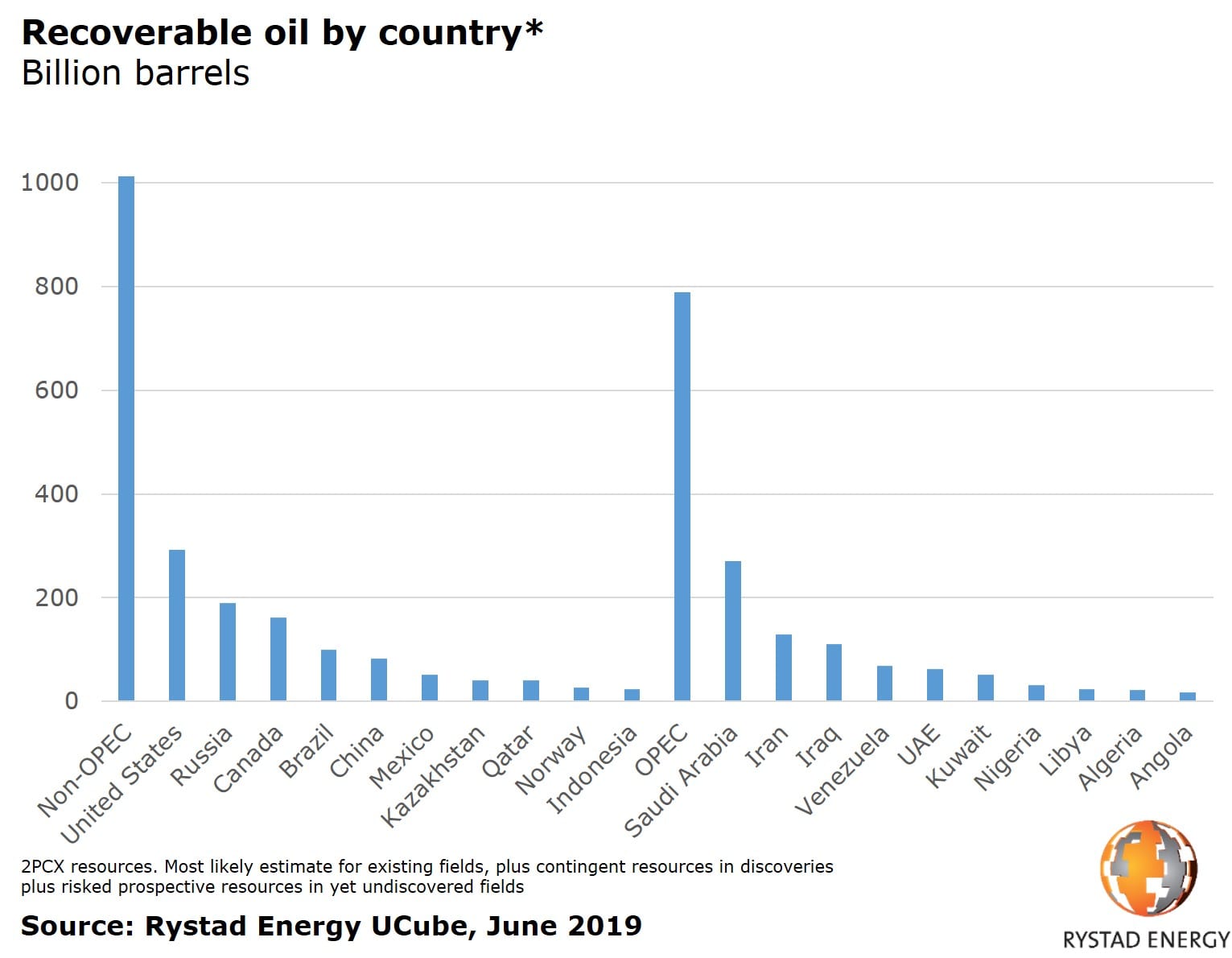In its latest annual report of world recoverable oil resources, Rystad Energy, the independent energy research firm, finds that the United States currently holds 293 billion barrels of recoverable oil resources. This is 20 billion barrels more than Saudi Arabia and almost 100 billion barrels more than Russia. Rystad Energy’s estimate of US recoverable oil is also five times more than officially reported proven reserves as published in the BP Statistical Review of World Energy 2019.
Tight oil plays in the Permian Basin in Texas and New Mexico now hold 100 billion barrels of recoverable oil resources, according to Rystad Energy’s analysis. Shale/tight resources in the Permian thus remain largely flat from the previous year, as production has been replaced through improvements in well configuration, largely driven by supermajors increasing their footprint in the Permian Midland Basin and by fine-tuning operations.
“We also note that production has not been fully replaced by increased reserves in some US shale plays, including Eagle Ford in Texas and Utica in Ohio,” says Jarand Rystad, CEO at Rystad Energy. “Oil companies have been focusing on core development and cash flows rather than exploration and de-risking non-core assets,” he adds.
Other notable reductions in resources, according to Rystad Energy’s reporting, are for non-US shale discoveries. Offshore deepwater exploration, meanwhile, has resulted in a positive replacement ratio, mainly driven by new discoveries in Guyana by ExxonMobil.

The annual review of oil reserves by Rystad Energy provides a consistent grouping of recoverable oil into proven reserves and probable reserves, as well as contingent and prospective recoverable resources. Proven reserves is a conservative statistical estimate of oil to be produced from fields and wells already sanctioned for development by oil companies and approved by governments. Contingent resources represent recoverable oil in fields that have been discovered but have not yet been sanctioned for development, while prospective resources are risked estimates from fields not yet discovered.
Rystad Energy consistently applies the standard of the Society of Petroleum Engineers (SPE) when estimating reserves and resources in fields, so reserves can be compared consistently across the world, both for Opec and non-Opec countries, and for conventional and unconventional fields. Official reporting from national authorities apply more diverse and less transparent standards.
Some Opec countries like Venezuela report official reserves apparently including yet undiscovered oil, while others like Brazil and Norway officially report conservative estimates covering only existing fields.
Rystad Energy estimates that the world’s proven oil reserves according to the SPE scheme total only 386 billion barrels, about one-quarter of the officially reported figures in BP Statistical Review. In order to reach a reserves estimate as high as the 1,730 billion barrels noted in BP’s calculation, Rystad Energy’s database would need to include 500 billion barrels from its estimates of yet undiscovered oil.
“Official reserves reporting from Saudi Arabia indicates an upwards revision of 10%, but we don’t see increases in activity that would justify such a large upgrade, so this revision could be due to changes in reporting methodology. The 20% revision to official US reserves, on the other hand, is due to higher reserves reported by the operators and is based on more stringent rules from the US Security Exchange Commission,” says Per Magnus Nysveen, Head of Analysis at Rystad Energy.
Rystad Energy’s report also confirms that global production of petroleum liquids and biofuels are on track to pass 100 million barrels per day (bpd) this year, representing an increase of about 2 million bpd from 2018. Also notable in the report is the observation that global production of natural gas liquids (NGL) has passed 10 million bpd, while an additional 5 million barrels comes from refinery gains and biofuels.
“About 5 million barrels per day of global oil production capacity is currently idled for several reasons – less infill drilling offshore, sanctions on Iran, continued instability in Libya, economic collapse in Venezuela, pillage and sabotage in Nigeria and voluntary cuts by Opec and its allies,” says Paola Rodriguez-Masieu, Oil Market Analyst at Rystad Energy.
The gradual come-back of this suppressed oil production and resilient growth from US tight oil, combined with reduced oil demand due to trade conflicts, is forecasted to put a firm lid on oil prices for a couple of years, according to oil market analysts at Rystad Energy.



